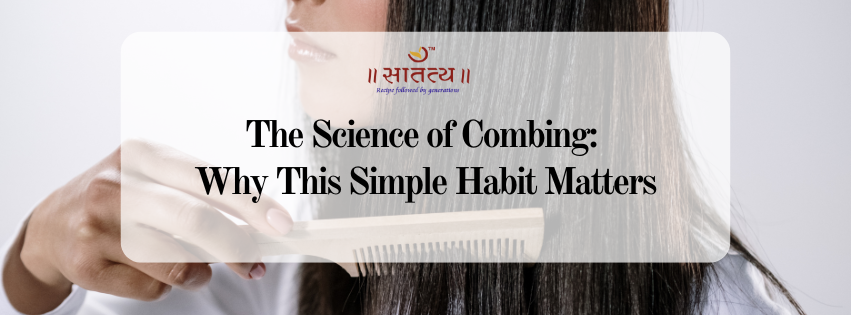
The Science of Combing: Why This Simple Habit Matters
Combing our hair is one of the first grooming habits we learn as children. For many, it’s so automatic that we rarely stop to think about its actual benefits. But behind this seemingly small act lies an interesting mix of biology, physics, dermatology, and even psychology.
Combing isn’t just about looking neat it’s about keeping your scalp and hair healthy in ways you may not have realized.
1. The Biology of Combing
Your scalp is home to over 100,000 hair follicles, each producing a single strand of hair. These follicles rely on a steady supply of oxygen and nutrients to remain active and healthy.
When you comb your hair, the gentle movement stimulates microcirculation in the scalp. This improves blood flow, ensuring that the follicles receive the nourishment they need for strong and sustained growth.
Another key biological function is the distribution of sebum, the natural oil produced by sebaceous glands near your follicles. Left concentrated at the scalp, excess sebum can make the roots greasy while leaving the hair shaft dry. Combing evenly spreads these oils, creating a natural protective coating that keeps hair:
- Moisturized
- Smoother
- Shinier
- Less prone to breakage
2. The Physics of Tangles and Breakage
Hair tangling is a natural phenomenon caused by friction, static electricity, humidity, and hair porosity. Every strand has tiny scales called cuticles that can lift or roughen, causing strands to catch on one another.
When you comb, you’re essentially using mechanical force to realign hair fibers into a parallel direction, reducing knots. Wide-tooth combs minimize friction, while fine-tooth combs are better for styling and precision.
From a physics standpoint:
- Gentle, consistent strokes reduce strain on individual strands.
- Starting from the ends and working upward prevents cumulative tension and breakage.
- Avoiding combing wet hair aggressively matters because hair is up to 50% weaker when saturated with water.
3. Scalp Health and Hygiene
Beyond hair, combing plays a subtle but important role in scalp health. It can:
- Help remove dead skin cells and mild flakes
- Prevent buildup of sweat, oil, and environmental debris
- Keep hair follicles unclogged for better growth cycles
Think of combing as a form of gentle exfoliation for the scalp. However, there is a balance: over-combing can irritate the scalp, strip protective oils, and even cause micro-injuries.
For most people, 2–3 times a day is more than enough to enjoy the benefits without causing harm.
4. The Psychology of Combing
Combing is more than just physical care; it’s also tied to our mental and cultural lives.
- Stress relief: The repetitive motion can be soothing, much like meditation.
- Cultural rituals: In many traditions, combing is symbolic of grooming, bonding, and well-being. Parents combing a child’s hair is as much about connection as it is about hygiene.
- Confidence: Neatly combed hair has a visible effect on self-image, which can influence mood, confidence, and even productivity.
In other words, combing serves as a small but meaningful act of self-care and identity.
5. Best Practices for Healthy Combing
To maximize the benefits of combing while minimizing damage, consider these science backed tips:
- Choose the right comb
- Wide tooth for detangling wet or curly hair
- Fine tooth for sleek styling
- Wooden or anti-static combs for frizz control
-
Be gentle with wet hair
Hair is at its weakest when soaked. If you must comb wet hair, use a detangler and wide-tooth comb. -
Start from the ends
Work upward to release tangles gradually and prevent pulling from the roots. -
Keep your comb clean
Wash regularly to remove oil, dirt, and product buildup. Otherwise, you’re just redistributing grime back to your scalp. -
Don’t over-comb
Too much combing strips oils and stresses follicles. Stick to 2–3 times daily.
6. Beyond Grooming: A Daily Ritual with Hidden Power
Combing might seem like a small part of your day, but science shows it’s multifaceted: it nourishes the scalp, protects the strands, prevents tangles, supports hygiene, and even nurtures mental well-being.
When viewed this way, combing is far more than grooming; it’s a mini health ritual that reflects the perfect blend of biology, physics, and psychology.
So tomorrow morning, when you reach for your comb, remember: each stroke is not just styling your hair, it’s supporting the health of your scalp, the strength of your strands, and even your state of mind.
Final Thought: Combing isn’t just about neatness; it’s science, self-care, and tradition rolled into one.

